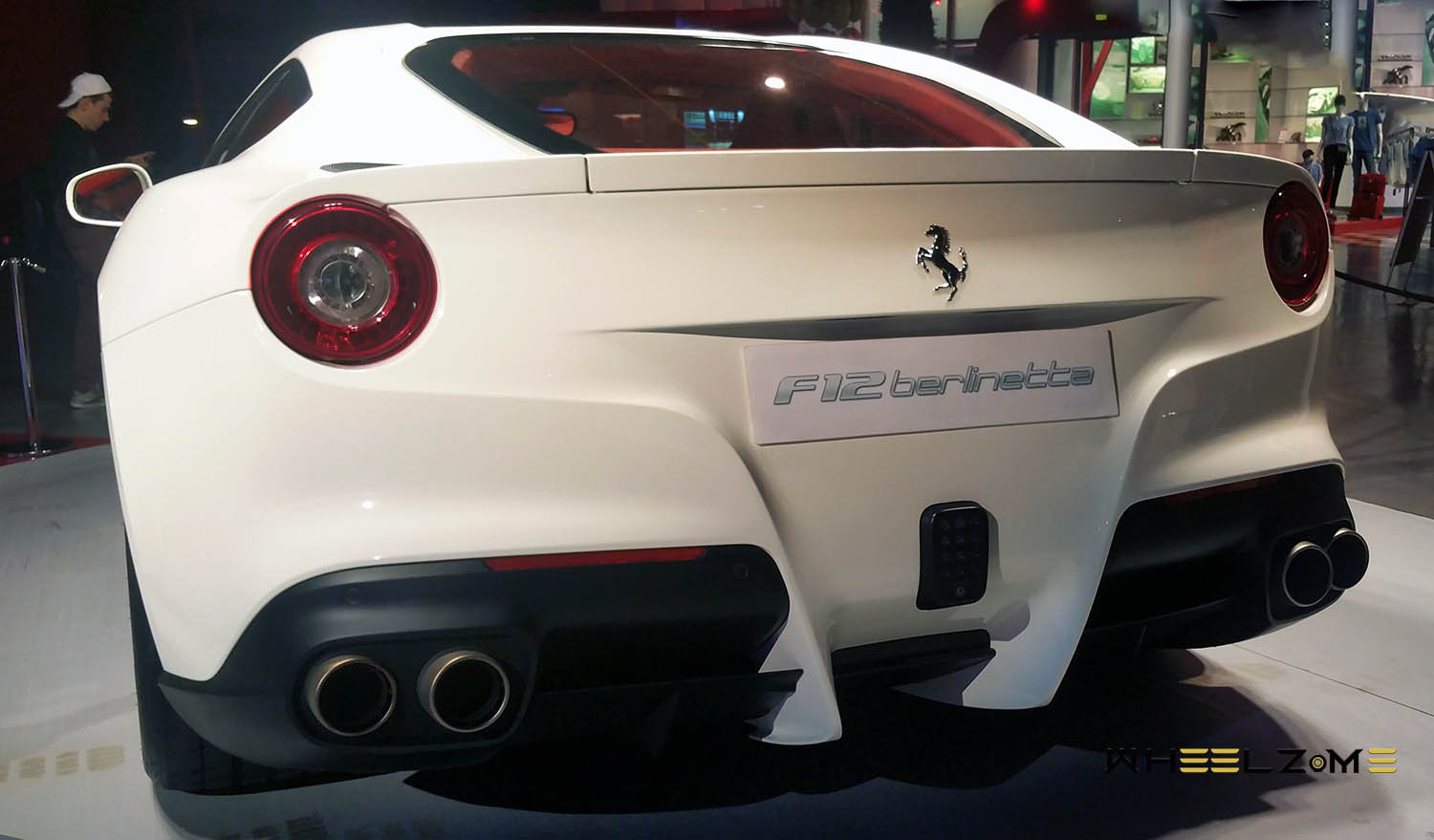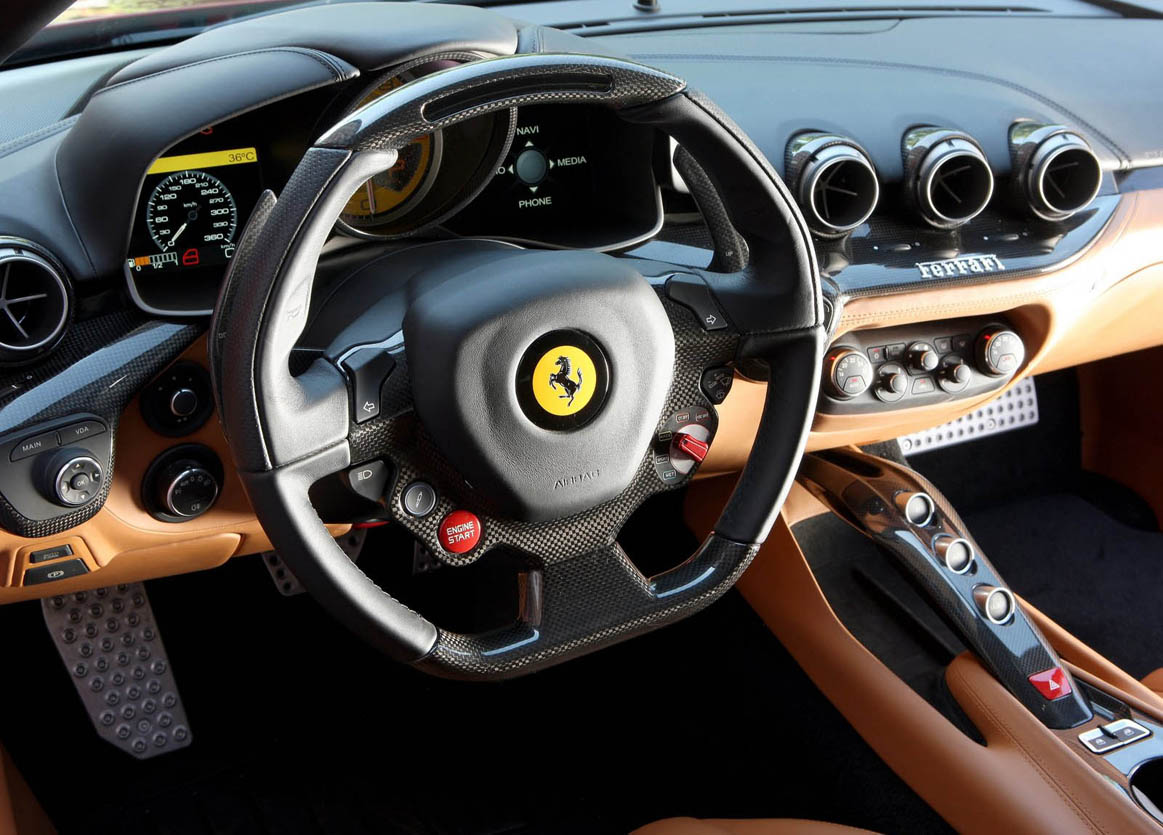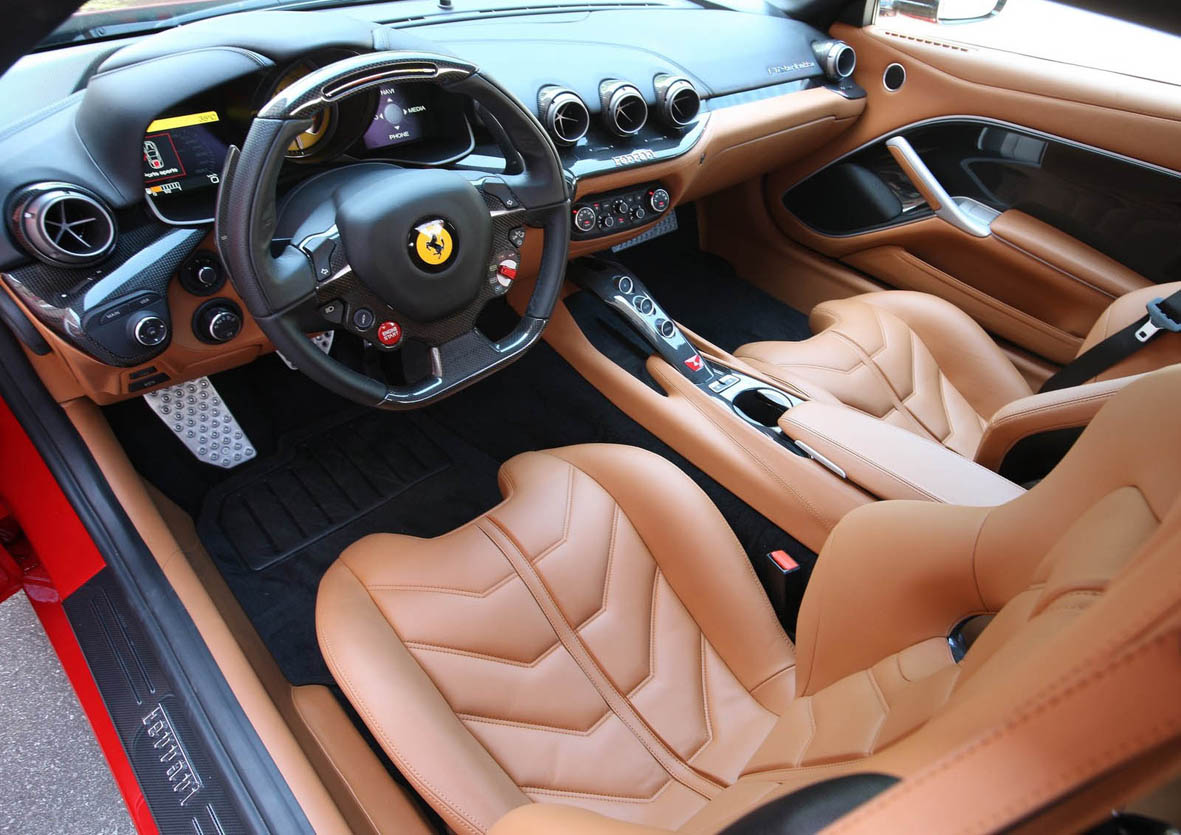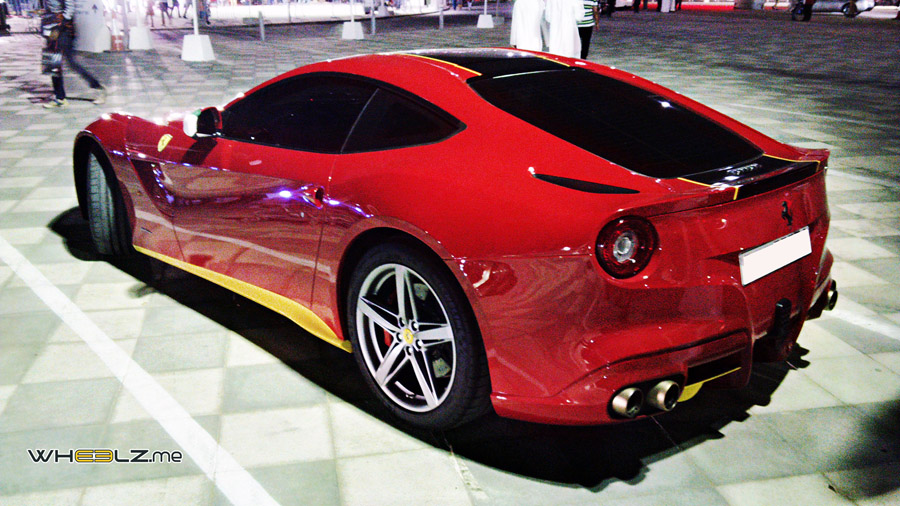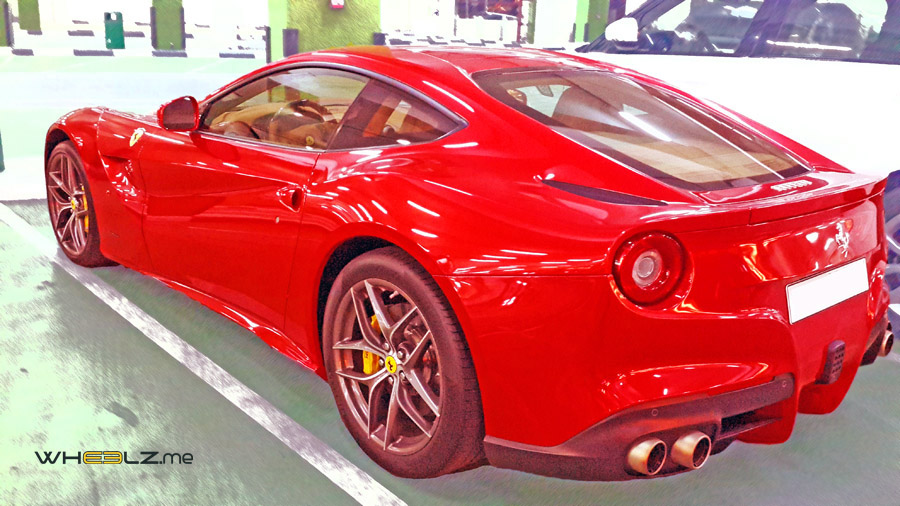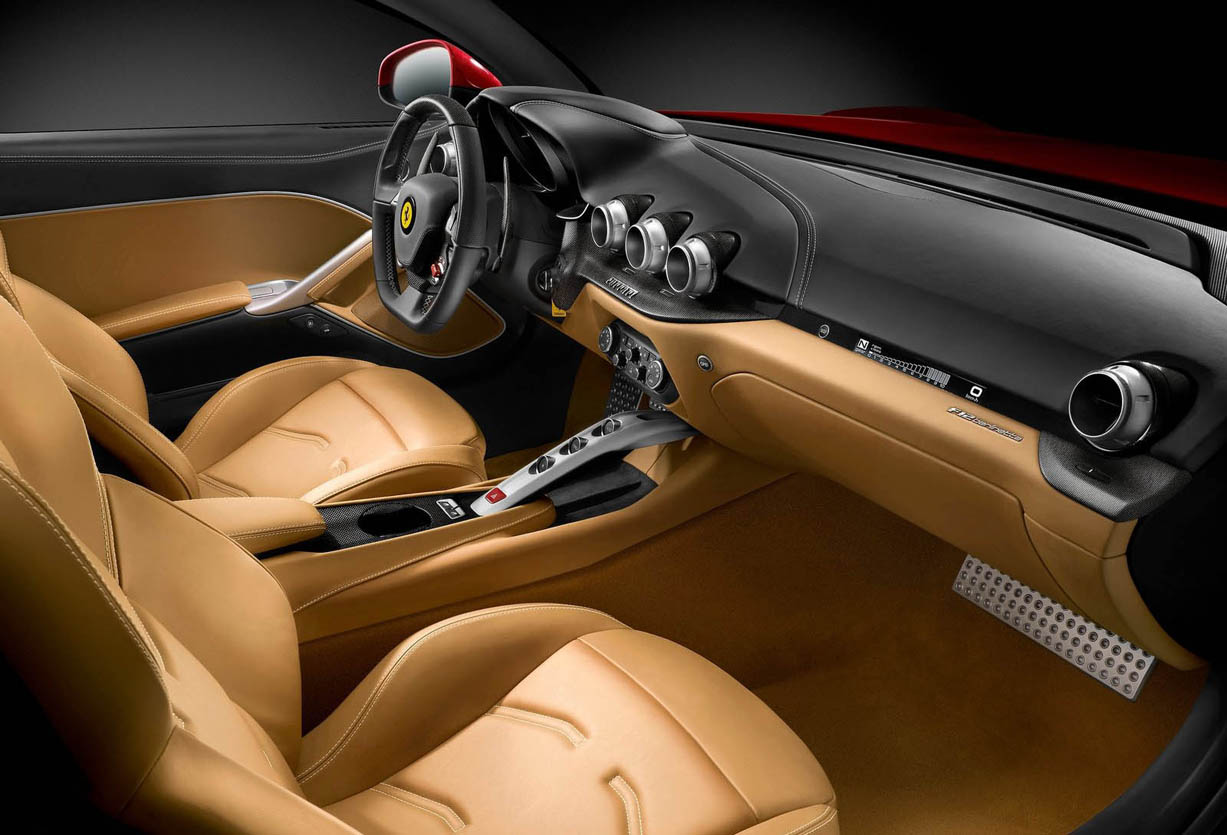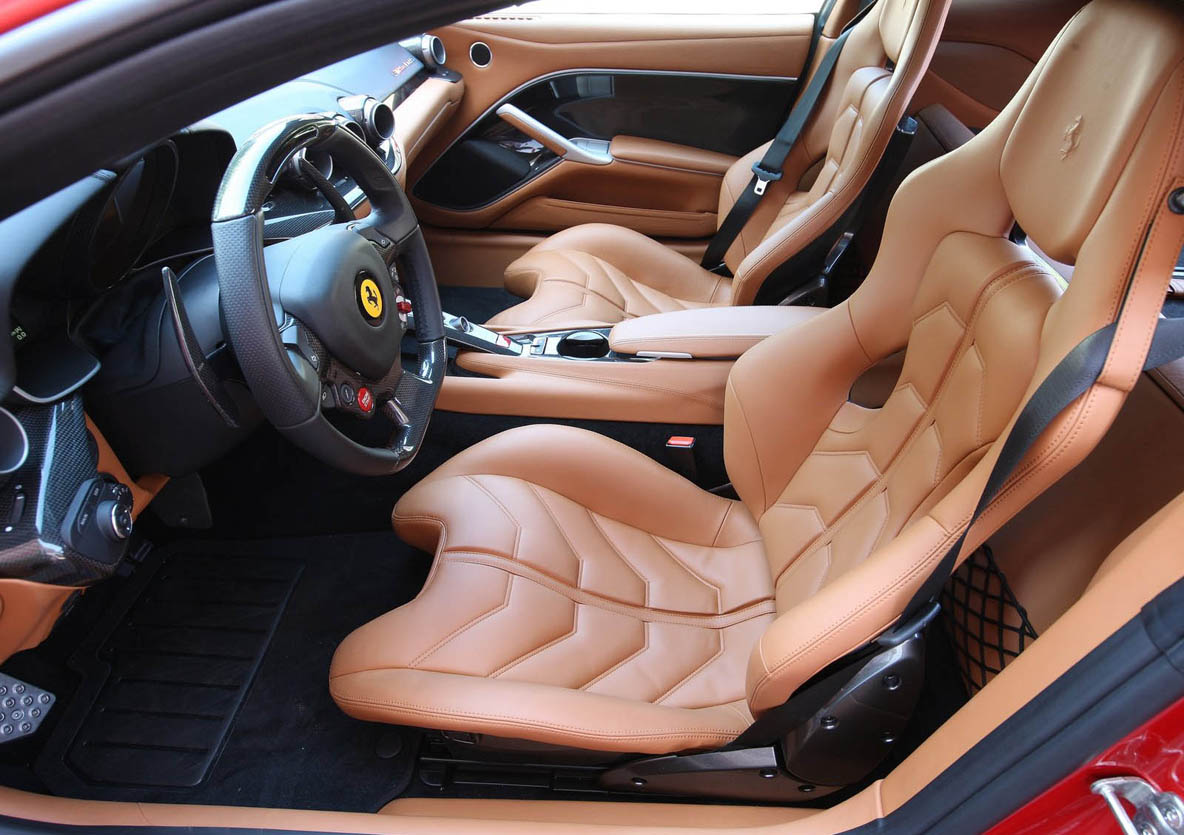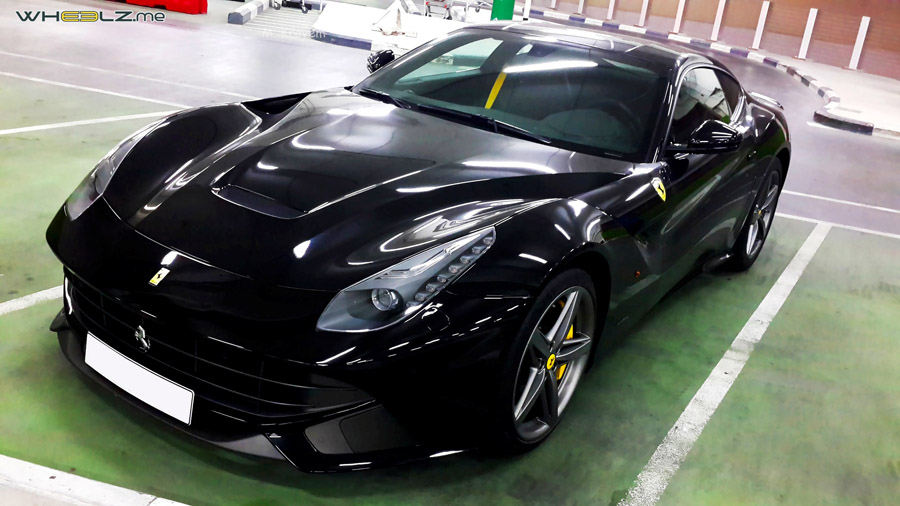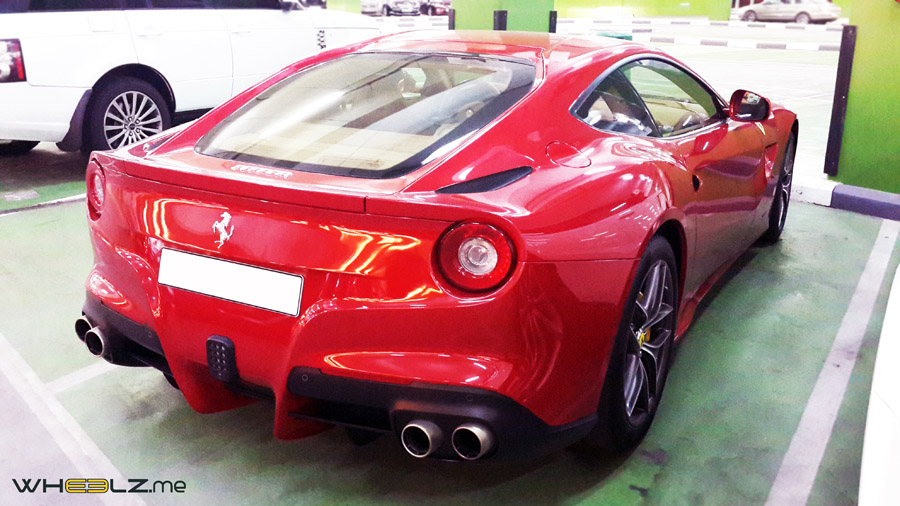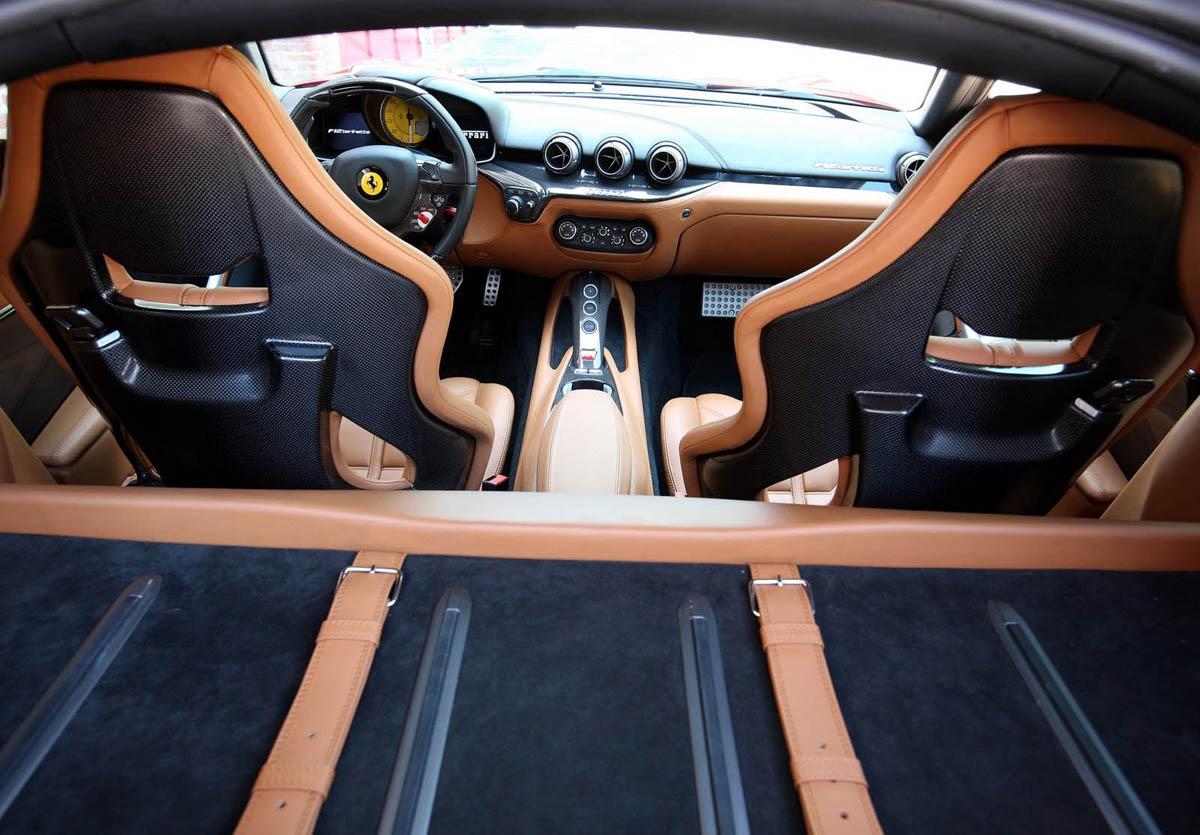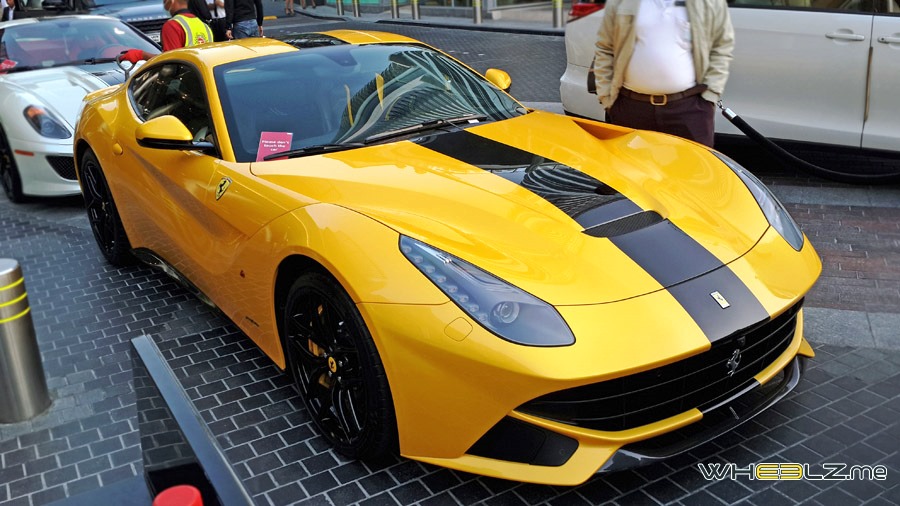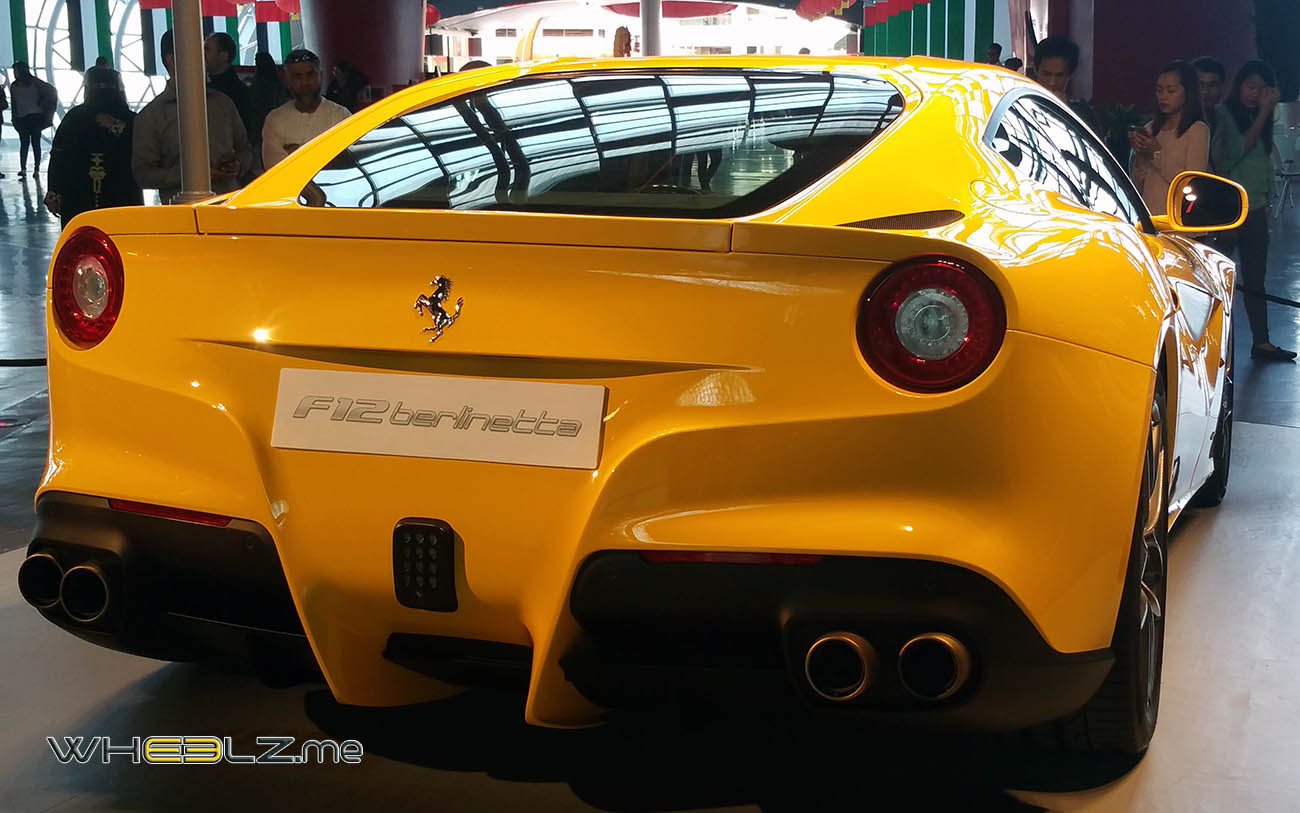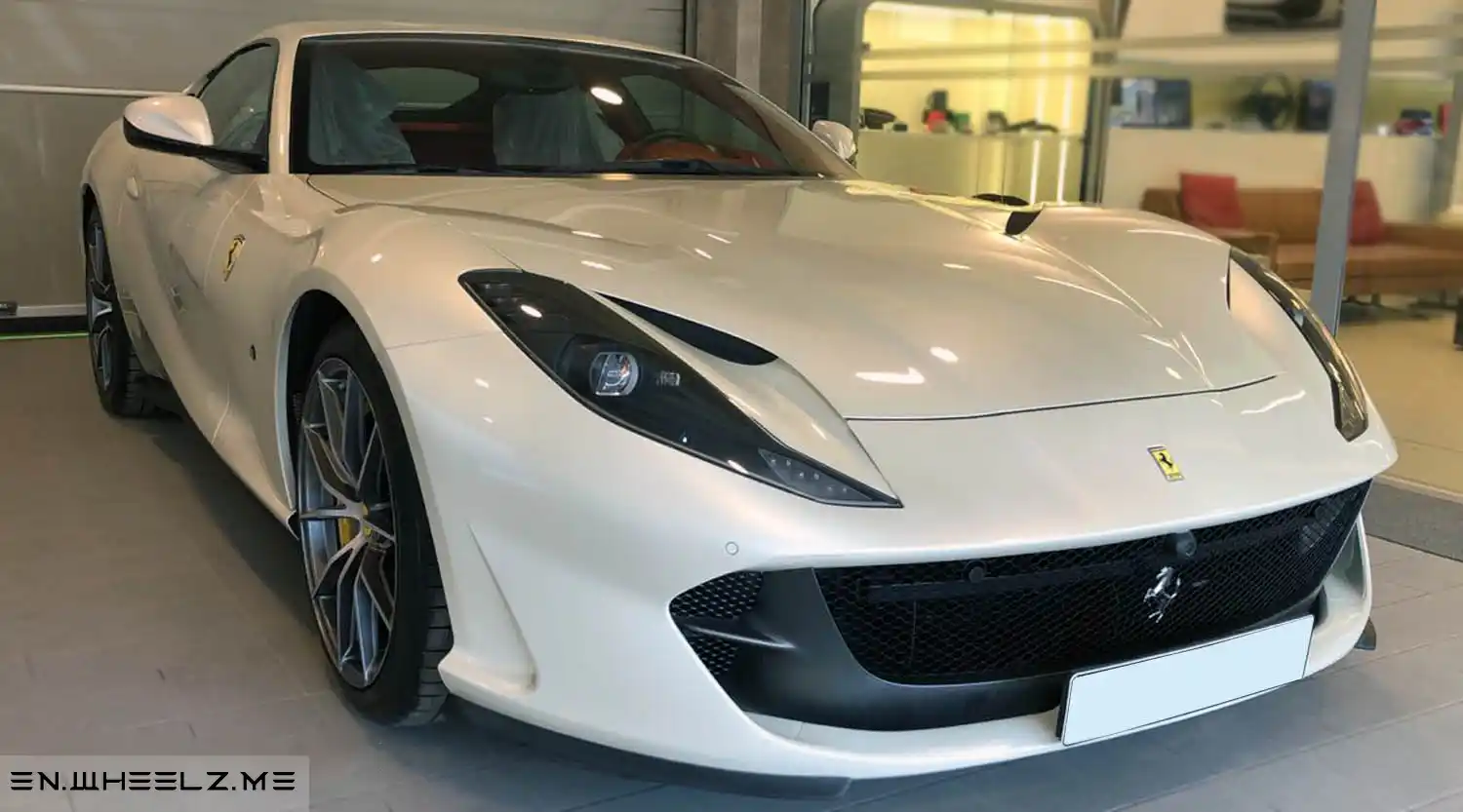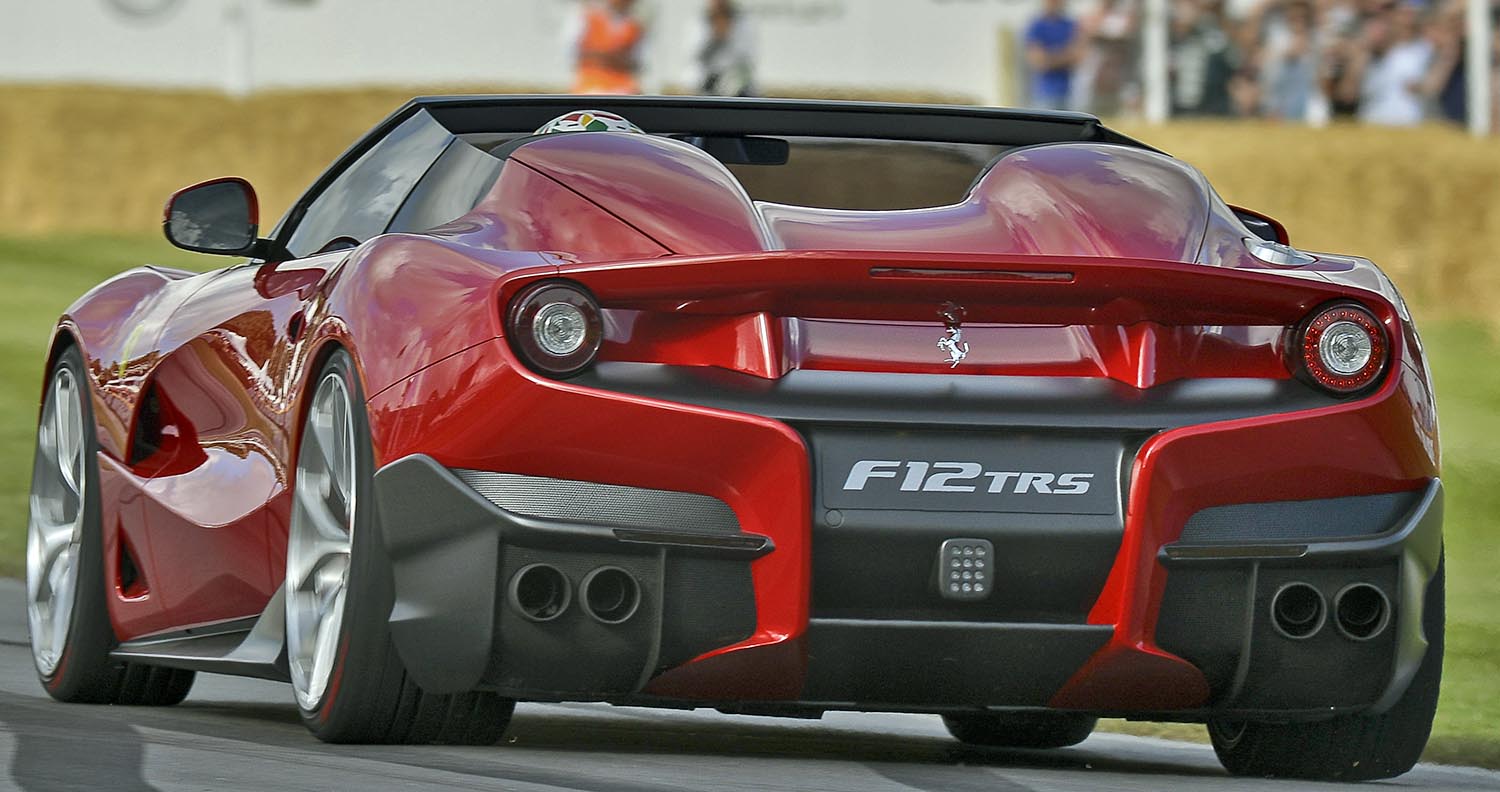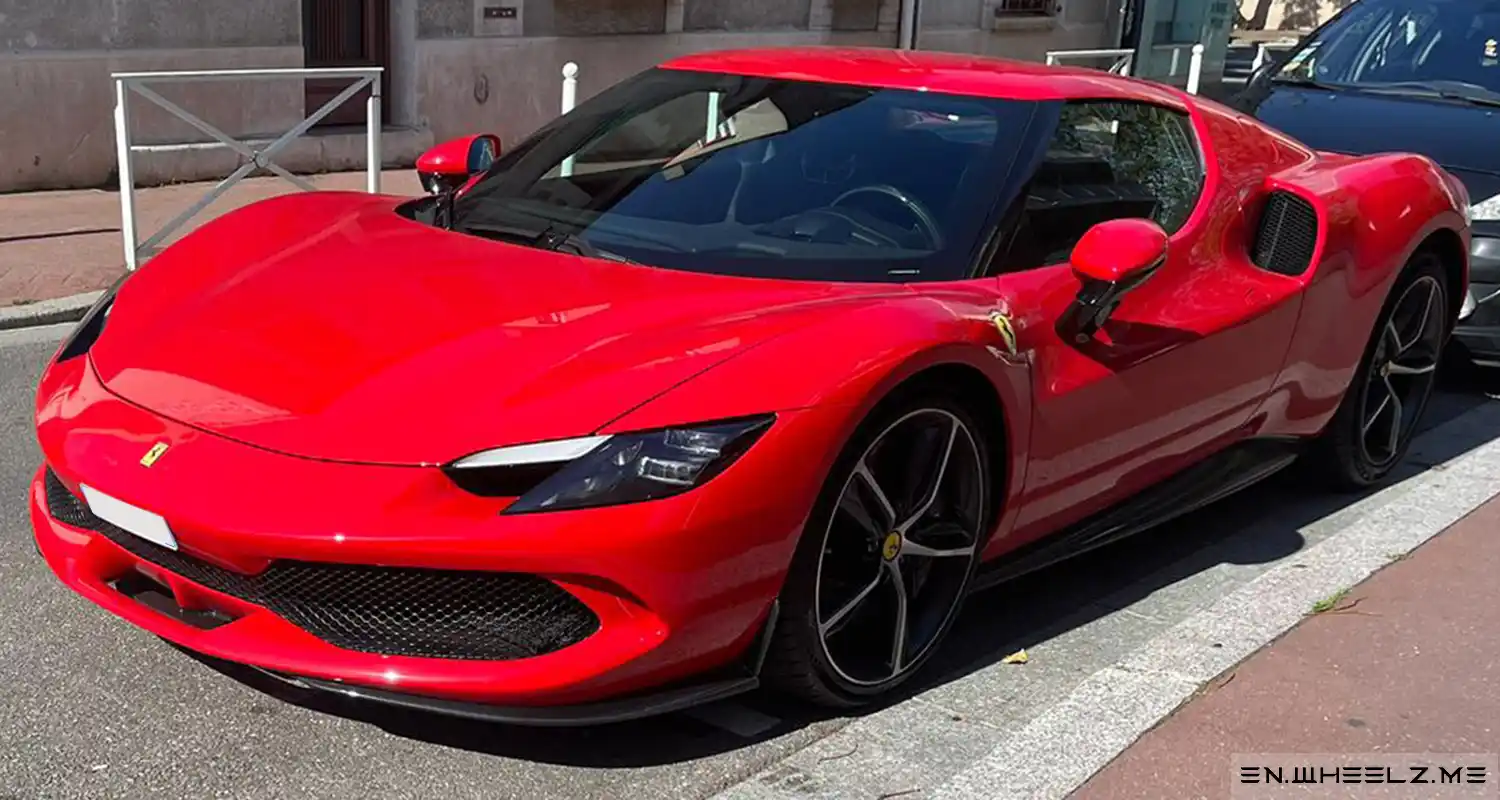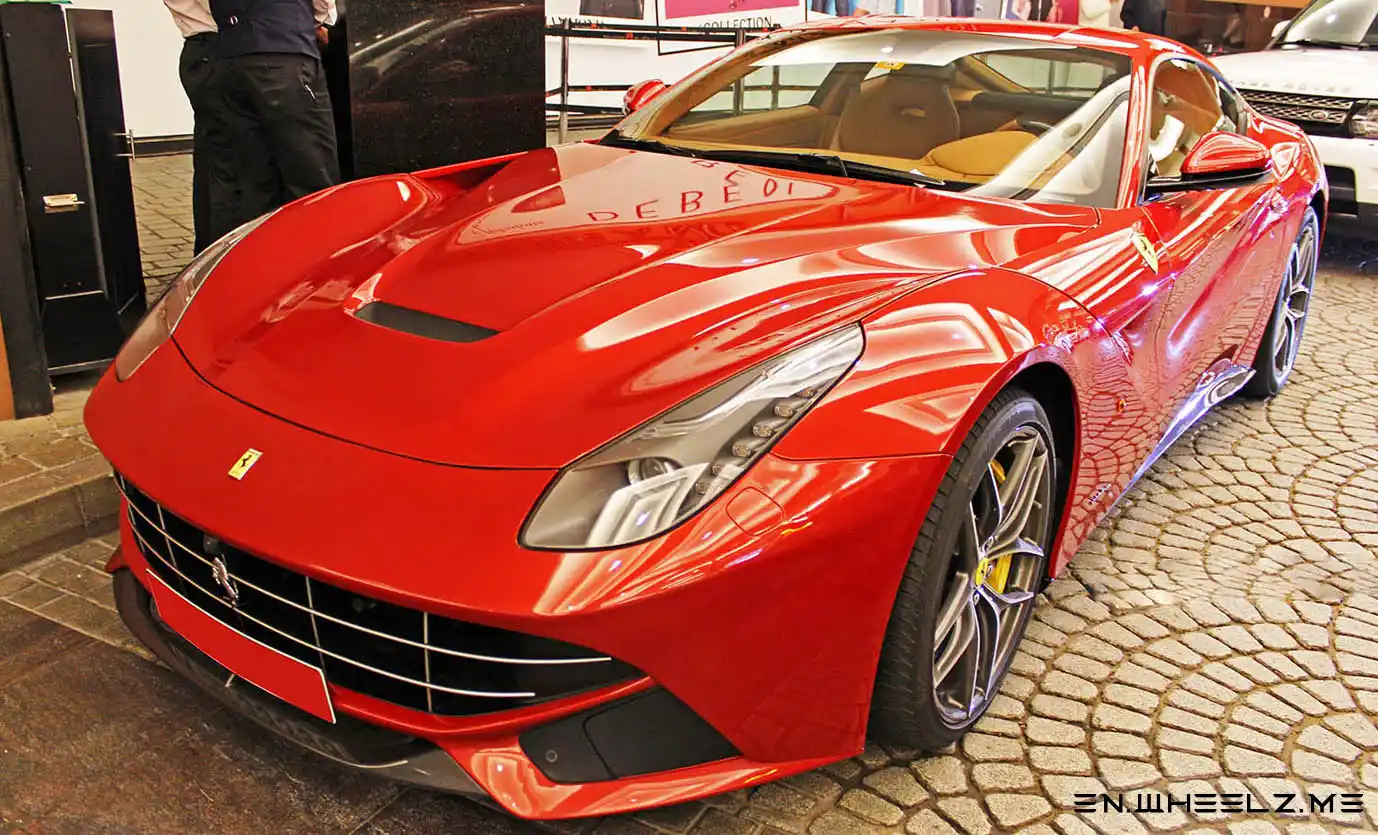
The Ferrari F12berlinetta ushers in a new generation of Ferrari 12-cylinders in the form of a car that delivers unprecedented performance from an exceptional new engine, unparalleled handling and innovative design and aerodynamics.
Every time Ferrari has unveiled a new 12-cylinder sports car since 1947, something magical has happened. Perhaps this has to do with the fact that our very first car, the 125 S, was itself a 12-cylinder or maybe it’s because purists see the 12-cylinder as the engine size par excellence. Be that as it may, every time a Prancing Horse car of this kind makes its debut, it hails the start of a new era.
There have been several 12-cylinder models built here at Maranello that have gone down in the annals of automotive history because of their technological prowess and the results they’ve delivered. The 1953 375 America, for instance, had an engine derived directly from the F1 single-seater of the day, while the 250 GTO in the 1960s was the perfect melding of styling and performance.

That list must also include, of course, the 1969 365 GTB4, better known simply as the Daytona, which, thanks to its brilliantly balanced architecture delivered absolutely unique driving emotions. All of these engines and cars are now eagerly sought after by collectors the world over and each one represented major generational leap forward when it debuted. This story continues today with the Ferrari F12berlinetta which is not merely our latest mid-front 12-cylinder model but the first in a whole new generation of this kind of car.
In fact, it is the most high performance Ferrari ever built yet it still effortlessly marries extreme performance with benchmark efficiency, delivering fuel consumption and emissions levels that are 30% lower than the previous generation. The challenge for our engineers and technicians this time was to create a front-engined car with blistering performance that was still able to offer the same driving pleasure and involvement at lower speeds. A difficult task because it meant improving on the design of the 599 GTB Fiorano, deemed the most beautiful Ferrari ever. However, their commitment and determination has produced a car sporting an exceptional new 740 hp mid-front V12 engine that delivers 690 Nm of torque.
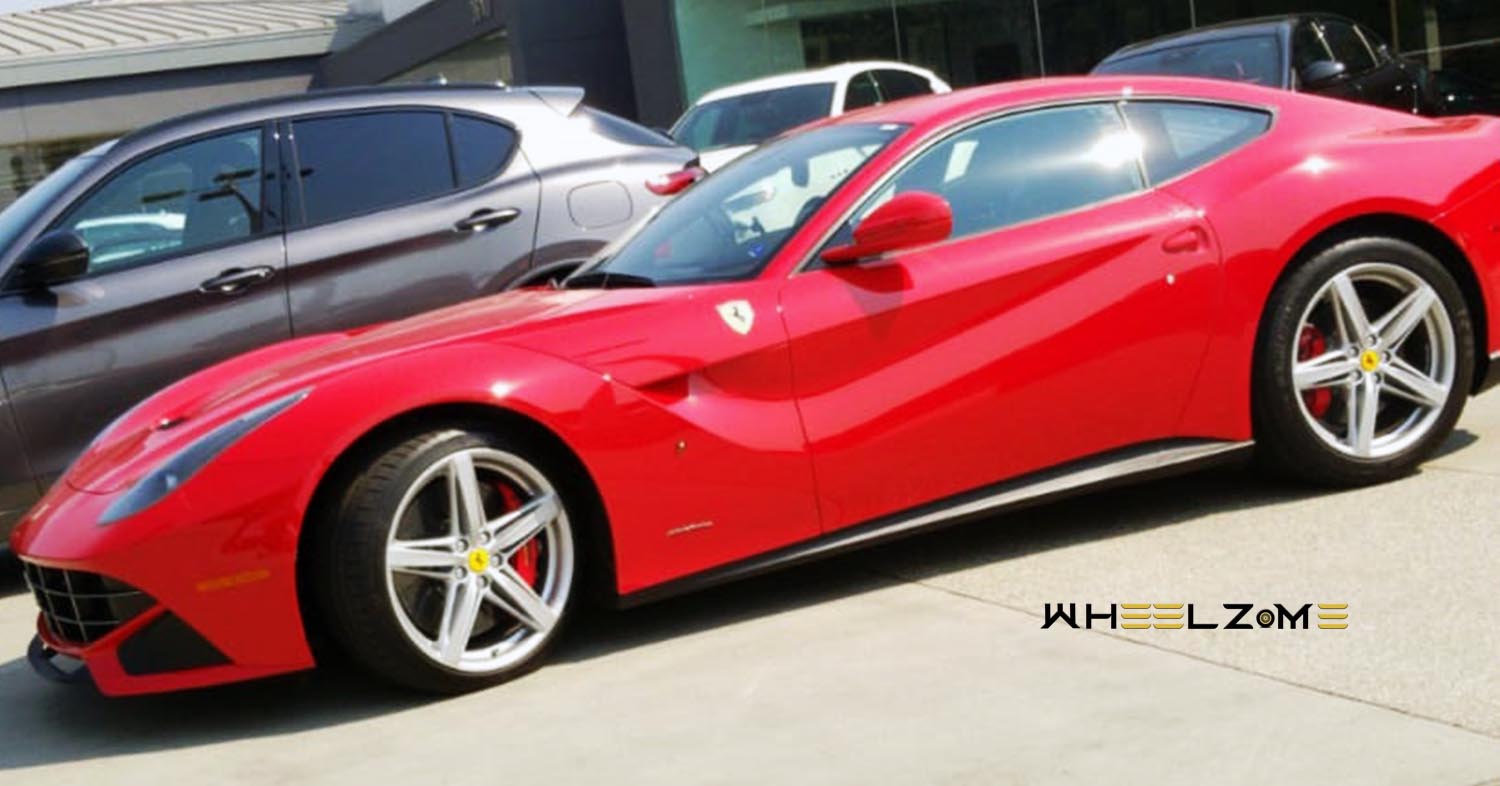
Its engine and driver’s seat have both been lowered, the wheelbase is shorter and a new suspension and gearbox layout have helped compact the rear. The result is a more compact car than the 599 GTB Fiorano. One that also has perfect weight distribution with 54% over the rear axle and a lower, pulled-back centre of gravity to boot. Thanks to all these characteristics, the Ferrari F12berlinetta delivers truly exceptional performance figures: 0-200 km/h in 8.5 seconds and a lap time at Fiorano of just 1’23”. The Ferrari F12berlinetta’s spaceframe chassis and bodyshell are both entirely new too and employ 12 different aluminium alloys – some being used for the first time in the automotive sector – and an array of leading-edge assembly and joining technologies. This helped cut the car’s overall weight to just 1,525 kg and maximise its performance efficiency, boosting torsional rigidity by 20%. As with every Ferrari, the F12berlinetta’s aerodynamics were developed hand-in-glove with its styling, resulting in a plethora of innovative solutions. Not least of these are the Aero Bridge, which uses the car’s bonnet to create downforce for the first time, and Active Brake Cooling, a system of guide vanes on the brake air ducts which open when brake operating temperatures are high enough. The result is that the Ferrari F12berlinetta is the most aerodynamically efficient Ferrari ever (a figure of 1.12 – double that of the 599 GTB Fiorano) with a Cd of 0.299 and downforce of 123 kg at 200 km/h.
The product of the ongoing collaboration between the Ferrari Style Centre and Pininfarina, the Ferrari F12berlinetta’s design centres around the car’s brilliantly bilance proportions. It has an original innovative style featuring typical Ferrari 12-cylinder styling cues. Clothed in sleek, aggressively sculpted lines, it offers a superb standard of occupant space and comfort despite its compact exterior dimensions too.
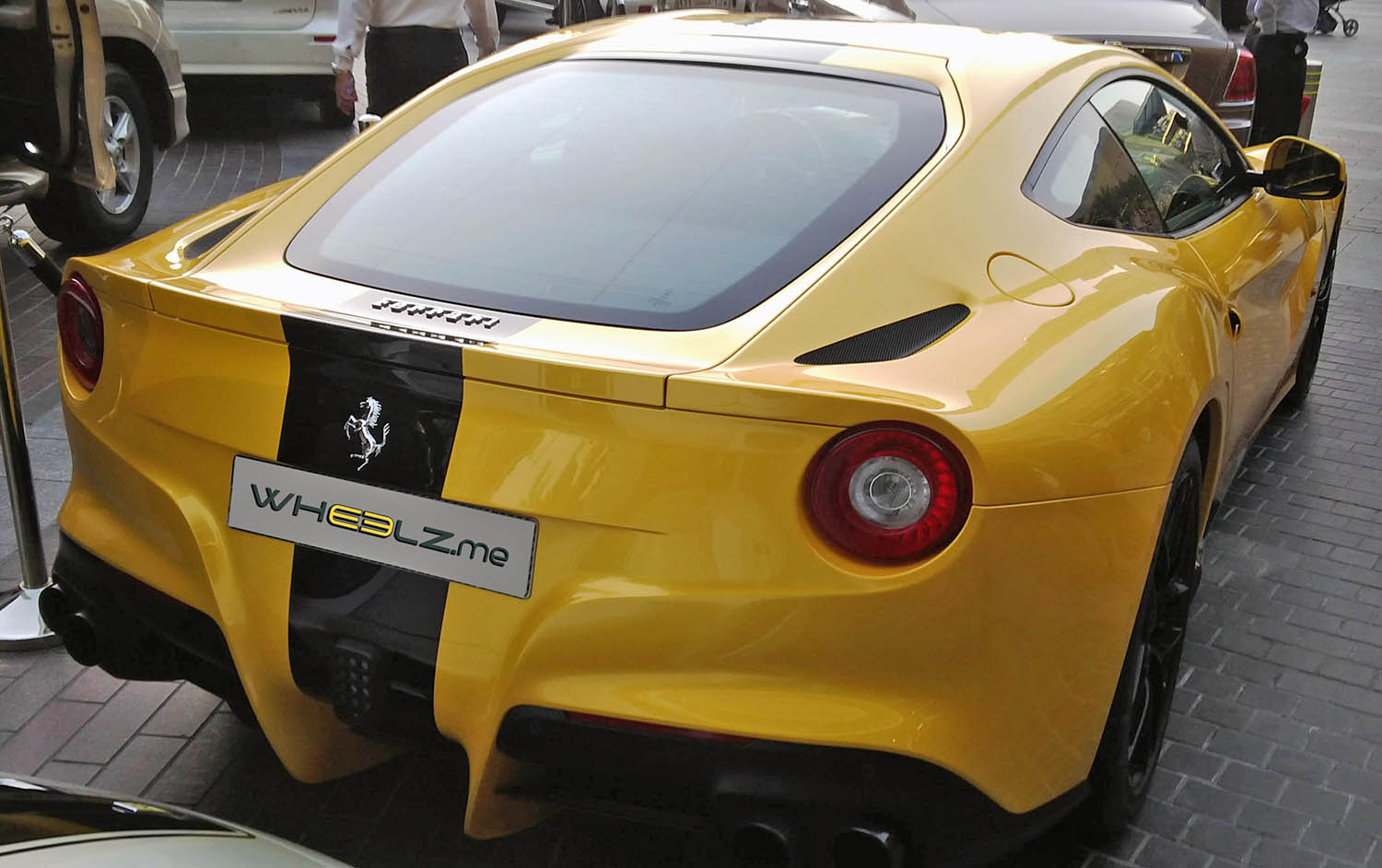
Powertrain
The Ferrari F12berlinetta’s 200-bar, direct-injection 6262 cc 65° V12 delivers absolutely unprecedented performance for a naturally aspirated 12-cylinder engine. It has a maximum power output of 740 CV at 8250 rpm, while its specific power output is a record-breaking 118 CV/l. Responsiveness and strong pick-up is guaranteed by maximum torque of 690 Nm, 80 per cent of which is already on tap at 2500 rpm, with a constant surge of power all the way up to the 8700 rpm rev limit. Just as is the case with F1 engines, the V12 has very low inertia and thus revs rise very rapidly.
Driving involvement is intensified by the rich, full exhaust soundtrack typical of Ferrari’snaturally-aspirated V12s. The Ferrari F12berlinetta’s performance levels give a good idea of the engine’s incredible efficiency, where both fuel consumption and emissions are now 30 per cent lower thanks to the Stop&Start system, a “smart” alternator, and Multispark ignition system. These, along with numerous other technical solutions, have reduced internal friction making the F12berlinetta best-in-class for its power-emissions ratio.
The car’s compression ratio has also been increased to 13.5:1 and a new 3.0 ECU has been adopted that uses ionisation currents to control sparking and detect misfires. The Multispark ignition generates three sparks of different durations and intensities in quick succession. At low engine speeds, this optimises combustion and, consequently, lowers fuel consumption. The engine is also equipped with Stop&Start and a “smart” alternator which recharges the battery only when there is no demand for power. Meticulous attention was also paid to reducing internal friction, exhaust backpressure and intake depressurisation. The cylinder block has four oil scavenge pumps with rotors using smaller diameter blades which optimise extraction efficiency. Lubrication is guaranteed by an engine oil pump with variable geometry. The design of the pistons includes an anodising treatment to the first piston groove, with PVD (Physical Vapour Deposition) coating on the first piston ring and Graphal-coated piston skirts. All of this reduces friction between the piston and the cylinder liner. The camshafts are super-finished using a lapping process that reduces surface roughness to under 0.05 Ra, thus minimising the coefficient of friction between the cam lobes and the tappets. The tappets themselves have been given a DLC (Diamond Like Carbon) coating that reduces their coefficient of friction, increasing performance and reducing fuel consumption.
The cylinder head features different conduit designs, new intake manifolds and new plenums fitted with resonators. The resonators create overpressure inside the intake tract the moment the intake valve opens and immediately before it closes, guaranteeing improved cylinder filling and generating a powerful supercharging effect which increases engine performance. The whole exhaust sequence has also been optimised – the catalysers have been miniaturised and hydroformed manifolds have been adopted, reducing their form and size without impinging on their capacity, resulting in improved permeability and reduced backpressure. The system’s geometry and materials have been developed to harmonise the intake and exhaust soundtracks to underscore the car’s extremely sporty character. All of the pipes connecting the 6-in-1 exhaust manifold to the single catalyser per bank are of equal length and this optimises the sound giving predominance to the first-order combustion harmonics. The characteristic engine sound can clearly be heard in the cockpit in all driving conditions.
The seven-speed F1 dual-clutch transmission boosts both performance and ride comfort at once. The technology involved is based on the independent management of odd and even gears which are pre-selected using two different in-put shafts. Gear shifting time – calculated as the overlap between the opening and closing phases of the two clutches – is thus zero and there is no interruption of torque delivery to the wheels. Shortened ratios have been developed for the Ferrari F12berlinetta and 7th gear is a direct ratio, not an overdrive, to ensure that the car’s huge performance potential can be exploited in every gear. The E-Diff3 electronic differential has also been integrated into the gearbox, helping to cut the car’s overall weight.
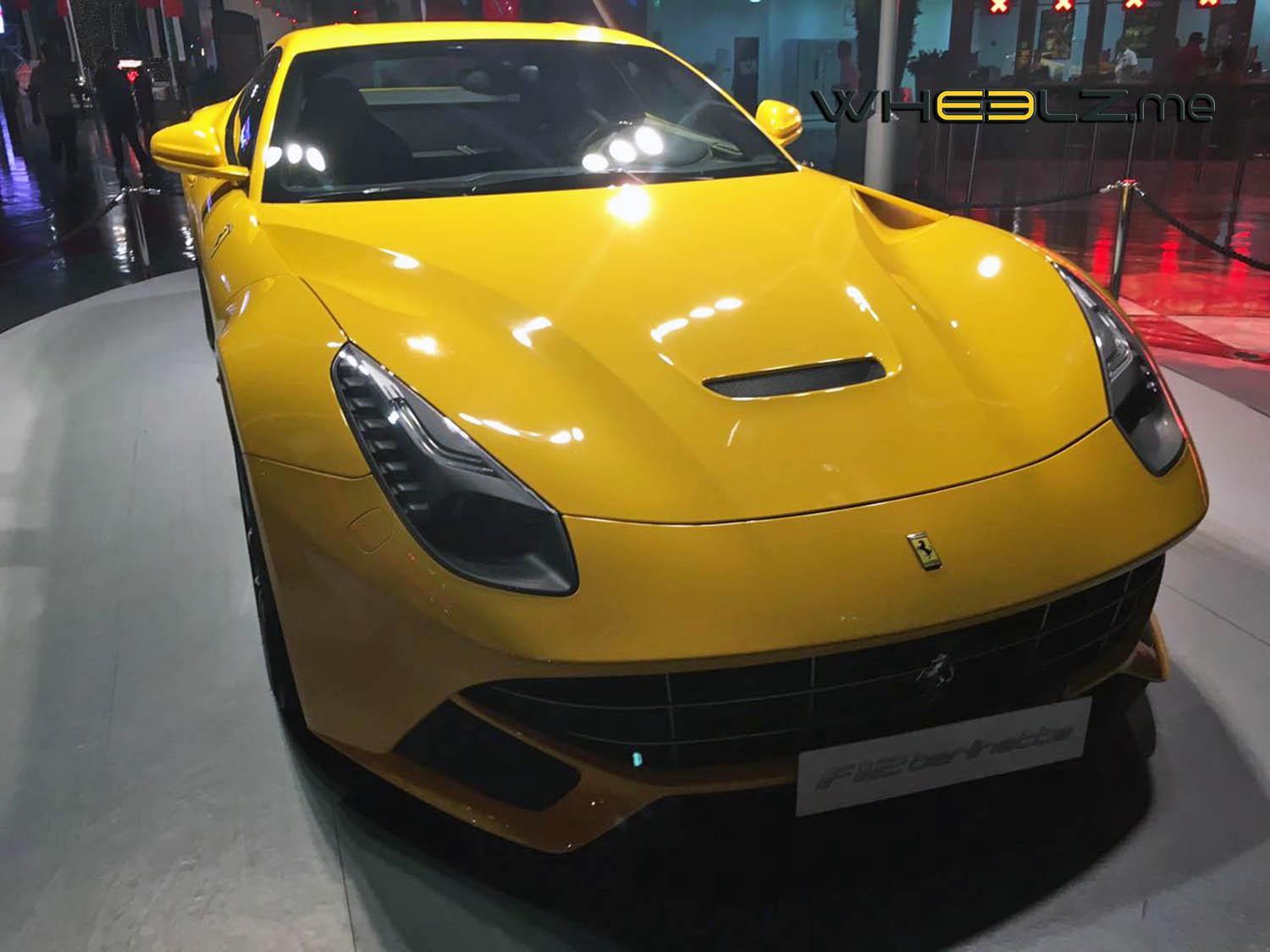
Architecture
The Ferrari F12berlinetta delivers truly extraordinary performance and driving involvement thanks to its highly evolved transaxle architecture which was developed with extremely ambitious objectives in mind. These were to reduce overall weight, lower and move the centre of gravity rearwards in the chassis, and reduce the car’s frontal area whilst contemporaneously increasing passenger and luggage space compared to the previous V12 coupé to ensure maximum comfort over lengthier journeys. To achieve these objectives, the engineers lowered the engine, dashboard and seats. Furthermore the rear of the car is now more compact, thanks to the repositioning and reduction in size of the fuel tank (permitted in part by a more efficient engine which delivers the same range as before) and to the new transaxle layout allowed by the rear multi-link suspension and F1 dual-clutch transmission with integrated electronic differential. Rather than a traditional separate boot, the F12berlinetta features a generous tail-gate incorporating the rear screen which contributes both to the compactness of the design, and the generous luggage space and its accessibility, while ensuring maximum structural rigidity. This solution also ensures that more of the car’s mass sits inside the shorter wheelbase to the benefit of handling dynamics. The end result is a car that’s lighter by 70 kg with a centre of gravity that’s 25 mm lower. It’s also shorter (-47mm), lower (-63 mm) and narrower (-20 mm) compared to the previous V12 coupé. The rear overhang has been greatly reduced (-82 mm) while the front one has been estende (+65 mm) to accommodate the cooling systems required for the powerful V12 engine. Weight distribution is ideal – 54% at the rear – and is unmatched by competitors within the segment.

Chassis and Bodyshell
The Ferrari F12berlinetta’s spaceframe chassis and bodyshell are completely new and use different types of materials and technologies, many of which originated in the aeronautical industry. No fewer than 12 different types of alloy have been used, including two new structural alloys. This has helped keep the car’s weight down (50 kg has been saved on the body-in-white alone which equates to a saving of 90 kg if the previous chassis were re-engineered to meet crash legislation) and maximise the efficiency of its performance (torsional rigidity has been increased by 20 per cent). Crash resistance (lateral pole impact and roof roll-over) is already in line with future legislative requirements and particular attention was taken during the design phase to improving production quality, and minimising repair times and thus costs for the client.
Aerodynamics
The Ferrari F12berlinetta’s aerodynamics were developed hand-in-hand with its styling, using CFD (computational fluid dynamic) simulations along with more than 250 hours of testing in the Wind Tunnel. Aside from external air flows, research focused on internal ones with particolar attention given to thermal factors (including the radiators, heat exchangers and brakes). Apart from boosting the car’s fluid dynamic efficiency, this research also led to a reduction in volumes through the optimised packaging of the car’s mechanical components. The result is that it is the most overall aerodynamically efficient Ferrari ever, a fact attested to by a figure of 1.12 (double that of the 599 GTB Fiorano). Downforce has been boosted by 76 per cent (123 kg at 200 km/h) while drag has been significantly reduced (the Cd is just 0.299).
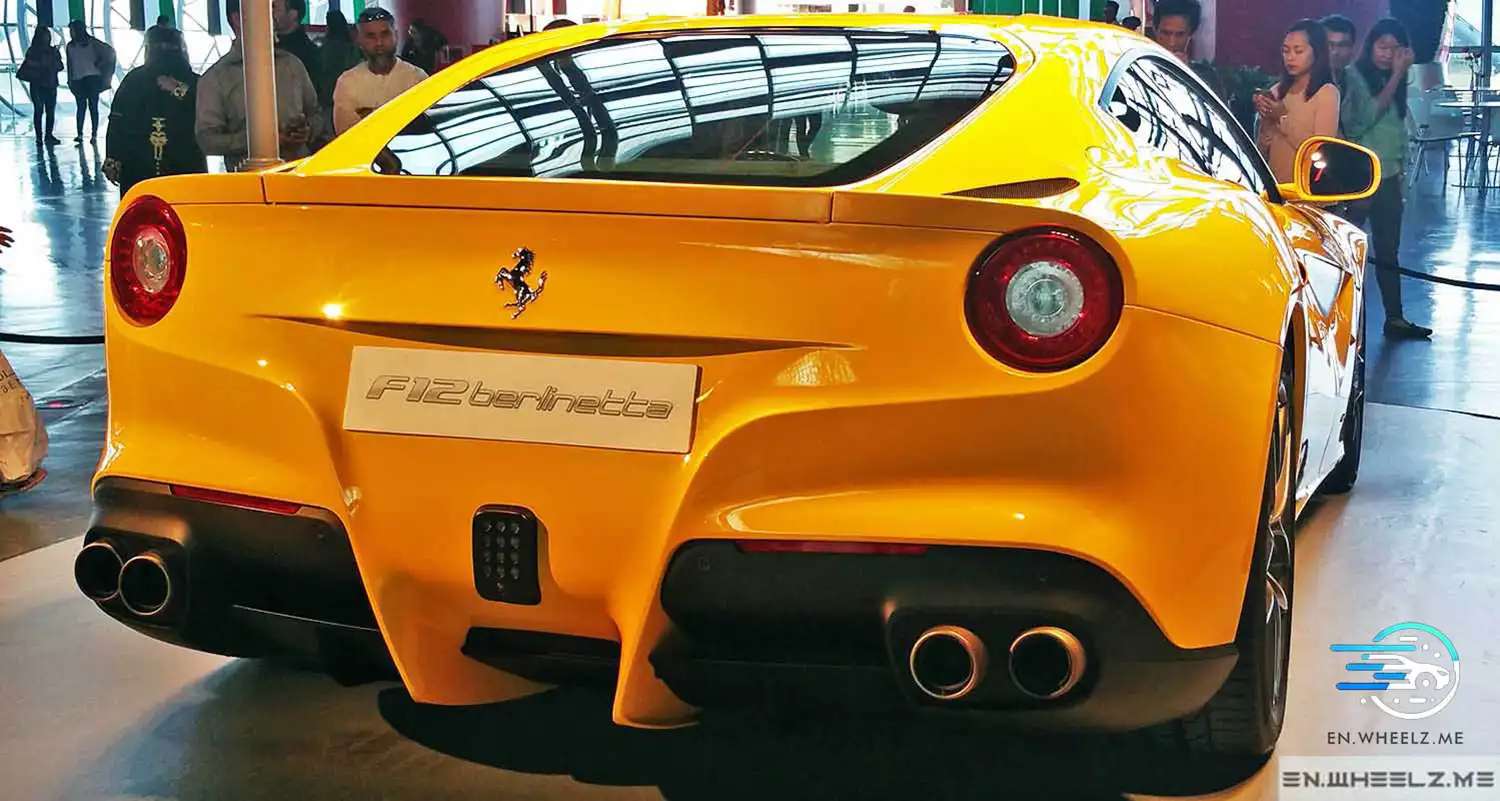
The Ferrari F12berlinetta’s aerodynamic efficiency brass is mostly generated by three elements: the Aero Bridge, the Blown Spoiler, the aerodynamic underbody. The Aero Bridge is an innovative solution that uses the bonnet to create downforce for the first time. It does so by availing of an aerodynamic channel on each side. These pass below a bridge in the area between the front wheelarch and the bottom of the A-pillar and deflect the airflow into scoops in the flanks where it interacts with the wake from the wheel wells to decrease drag. The Blown Spoiler uses the air flows near the rear of the car to modify, via special intakes, the pressure field in the wheel well, boosting overall efficiency. Lastly, the car’s flat underbody has been greatly evolved, not least thanks to the fact that the front splitter which is now separate to the bumper. This generates downforce whilst simultaneously directing the air flows towards the rear extractor, improving efficiency. Aerodynamic dams and semi-cone diffusers have been placed ahead of the front wheels which, as well as generating downforce, also help cool the brakes. The rear dam has the dual role of directing the airflow away from the wheel and generating a vortex that isolates the underbody from the centrifugal forces caused by the movement of the rear wheels. The generous rear diffuser, has four fins, the middle two of which have vortex generators, and thus also contributes to the significant increase in downforce. When it comes to integrating fluid dynamics and thermal management, the central air vent on the bonnet boosts the efficiency of the cooling system and also helps lessen the impact of the air on the windscreen at high speeds, creating a cushion that deflects the natural air flow. Drag is also reduced by the Active Brake Cooling system of guide vanes on the brake air ducts which open only if brake operating temperatures are high enough.
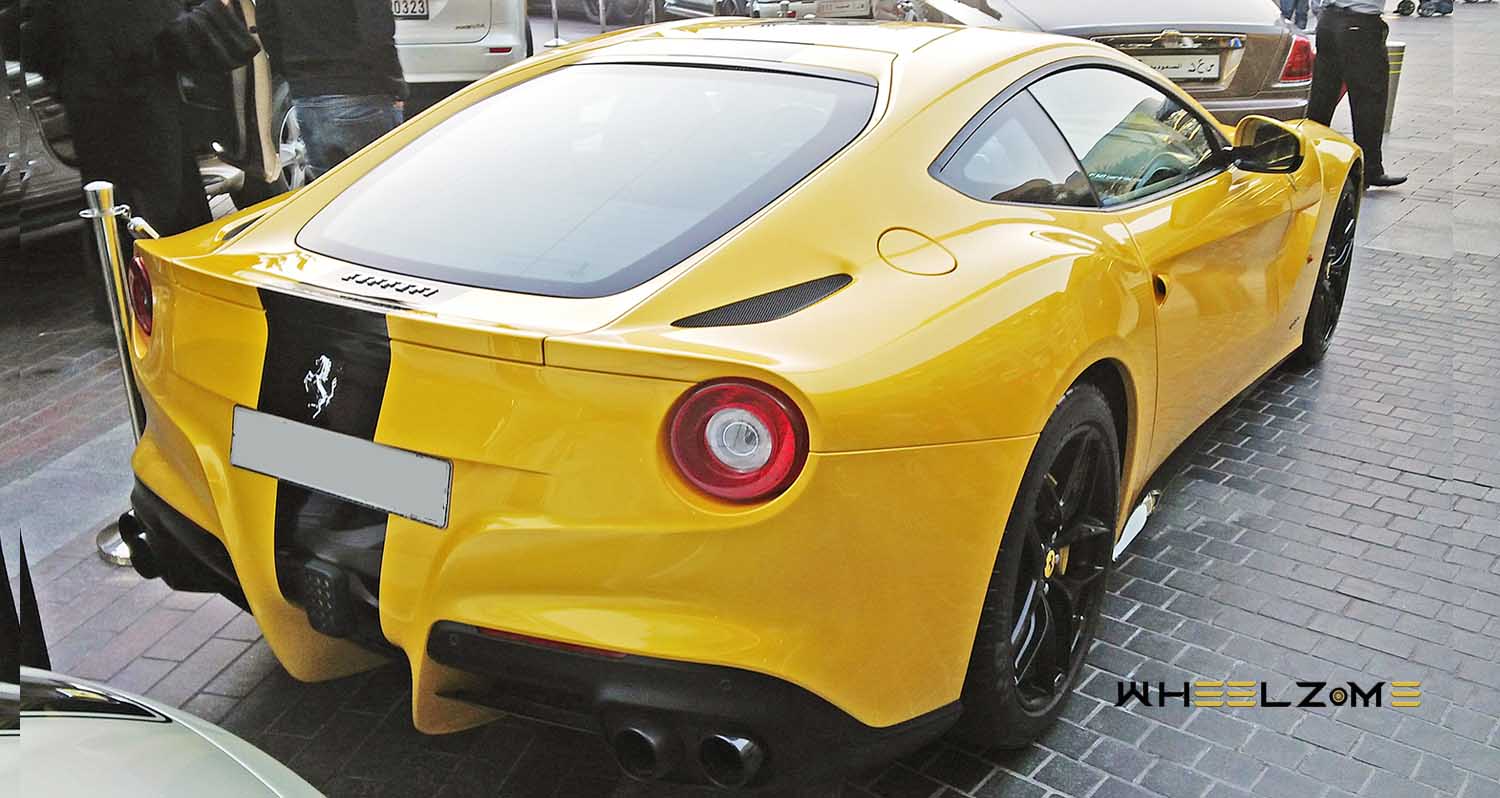
Styling
Designed by the Ferrari Styling Centre in collaboration with Pininfarina, the F12berlinetta strikes a perfect balance between maximum aerodynamic efficiency and the elegant proportions typical of Ferrari’s front-engined V12 cars. Designers and engineers worked in tandem to sculpt its surfaces so that they seamlessly incorporate the car’s many innovative aerodynamic solutions by “subtraction” rather than having it bristling with different appendages. The result of this collaboration is an innovative system of air flows which make this car absolutely original and unique, a true marriage of technology and aesthetics: an essential requisite for all Prancing Horse cars in which form and function are inextricably linked. The Ferrari F12berlinetta has low, sleek coupé lines with powerfully sculpted flanks whose contours curve and dip to channel the air flows from the bonnet. The two aerodynamic channels, created by reducing the volume between the wings and central bonnet bulge, pass below a bridge in the area between the front wheelarch and the bottom of the A-pillar, before flowing into scoops in the flanks, lifting and lightening the car’s look.
The front of the car is dominated by an imposing grille that draws air into the engine bay to cool the V12. On either side of it are electronically-controlled guide vanes which help cool the brakes. This is an original, active aerodynamic solution as, when closed, they cut drag and, when open, guarantee optimal brake cooling. The rear of the Ferrari F12berlinetta is characterised by a modern, functional reinterpretation of the Kamm tail which seamlessly integrates the two vertical fences of the rear diffuser. The resulting original T-shape also incorporates two full-LED circular tail-lights and the clearly F1-inspired rear fog light.
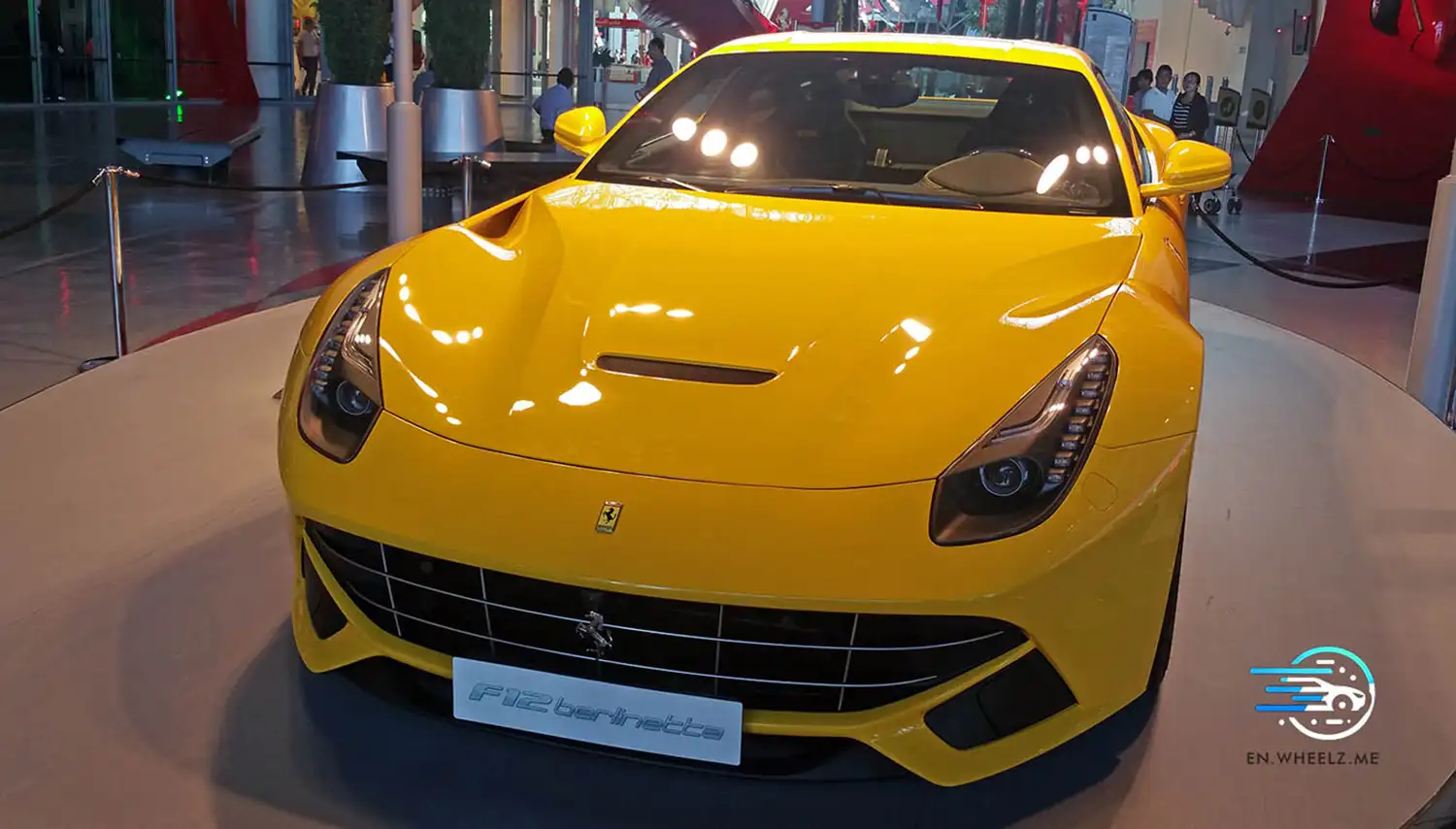
Vehicle dynamics and performance
With a Fiorano lap time of just 1’23”, 0-100 km/h acceleration in 3.1 seconds and 0 to 200 km/h in 8.5 seconds, the Ferrari F12berlinetta is the most high-performance car in Ferrari history. On top of pure performance figures, however, it is also incredibly fluid and intuitive to drive, thanks to its unique handling which inspires confidence at all speeds, not just on the limit on the track. This was achieved thanks in great part to the development work carried out on the layout which has helped the car take a massive leap forward in terms of agility and responsiveness, even at slower speeds, a characteristic more in keeping with mid-rear-engined cars until now. In addition to this, however, all the car’s sub-systems were developed and integrated with each other specifically to achieve these goals without compromising on high standards of occupant comfort. The latter include springs and dampers, wheels and tyres, yaw control systems, such as the E-Diff, traction control (F1-Trac), Stability Control (ESC), and auxiliary braking systems, such as ABS/EBD, which work in coordination to transfer torque in the most intelligent and efficient way possible to get the most out of the performance available.
The new carbon-ceramic braking system (CCM3) benefits from the latest developments, including a new material mix for the rear pads and an optimised cooling system derived from Ferrari’s F1 experience, along with the Active Brake Cooling at the front. Combined, these improvements eliminate fade and deliver excellent stopping distances (131 m from 200 km/h, an impressive 7-metre improvement on the 599 GTB Fiorano).
The Ferrari F12berlinetta features traditional double wishbone suspension with lower L-arm at the front and multi-link at the rear. It also sports the new SCM-E magnetorheological dampers which have twin solenoids and a new ECU with upgraded software. The system uses a fluid whose viscosity is altered by an electronically-controlled magnetic field generated inside the damper. This in turn translates into faster response times and more precise bump control which improves both performance and ride comfort. The F12berlinetta thus has faster acceleration than any other road-going Ferrari. Benchmark performance is marche by outstanding driver involvement courtesy of later braking, quicker turn-in, higher entry speeds and greater lateral acceleration through bends. The car requie less steering input at the wheel during cornering, there is better traction accelerating out of bends and braking distances are drastically reduced too.
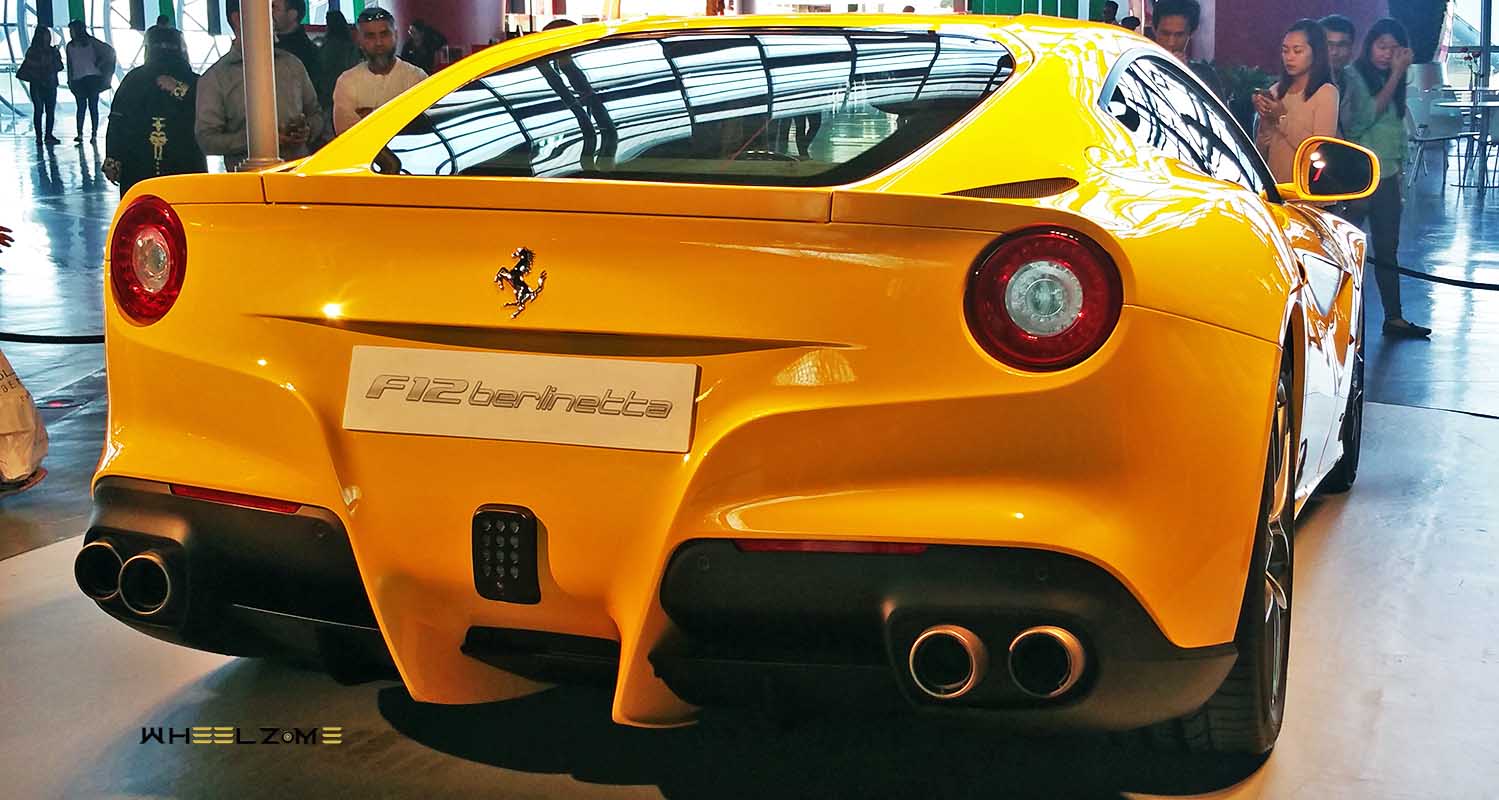
Cockpit and comfort on-board
Ferrari F12berlinetta’s cabin design features a cutting-edge look that is understated yet sophisticated. Volumes have been reduced to a minimum to enhance sportiness and efficiency. The interior space has been optimised to ensure that the driving experience is both sporty and comfortable at once. The perfect balance between advanced technologies and the sophisticated, beautifully hand-executed detailing of the Frau leather interior reflects the values that lie at the core of Ferrari’s DNA. The design’s strongest feature is the logical, ergonomic layout of the various functions within the cockpit: light and essential architecture embraces and enhances the Human Machine Interface, which places all the major controls on the steering wheel, and displays all the main information in the main binnacle straight ahead. The elimination of the indicator stalks and the clustering of all driver commands on the steering wheel underscore the car’s link to the world of racing. More ergonomically efficient F1 paddles and the fact that the driver can reach every single control with his hands firmly on the steering wheel rim ensure maximum performance is achievable in any driving condition. The dashboard is dominated by air vents of a new and innovative design. Of aeronautical inspiration, they are compact and are made from carbon-fibre and aluminium alloy. An optional display is available for the passenger-side dash and keeps the passenger actively involved in the whole driving experience. The tunnel console is both light and functional. The central bridge incorporates the F1 gearbox and hazard warning light buttons, and is one of the cabin’s signature elements. Below it is an Alcantara®-lined oddments storage space and there is also a cup-holder. The tunnel console is completed by a longitudinally adjustable armrest which is hinged at the side to facilitate access to the storage compartment beneath where there is also a convenient USB port. The Ferrari F12berlinetta’s door panels have a fluidly dynamic line and again are designed around the logical arrangement of their main features: armrest, door handle, tweeter, speaker, airbag and leather pocket. The panel’s central trim section allows ample scope for personalisation in terms of both finish and materials. Options include aluminium borders designed to underscore the panel’s characteristic lines.
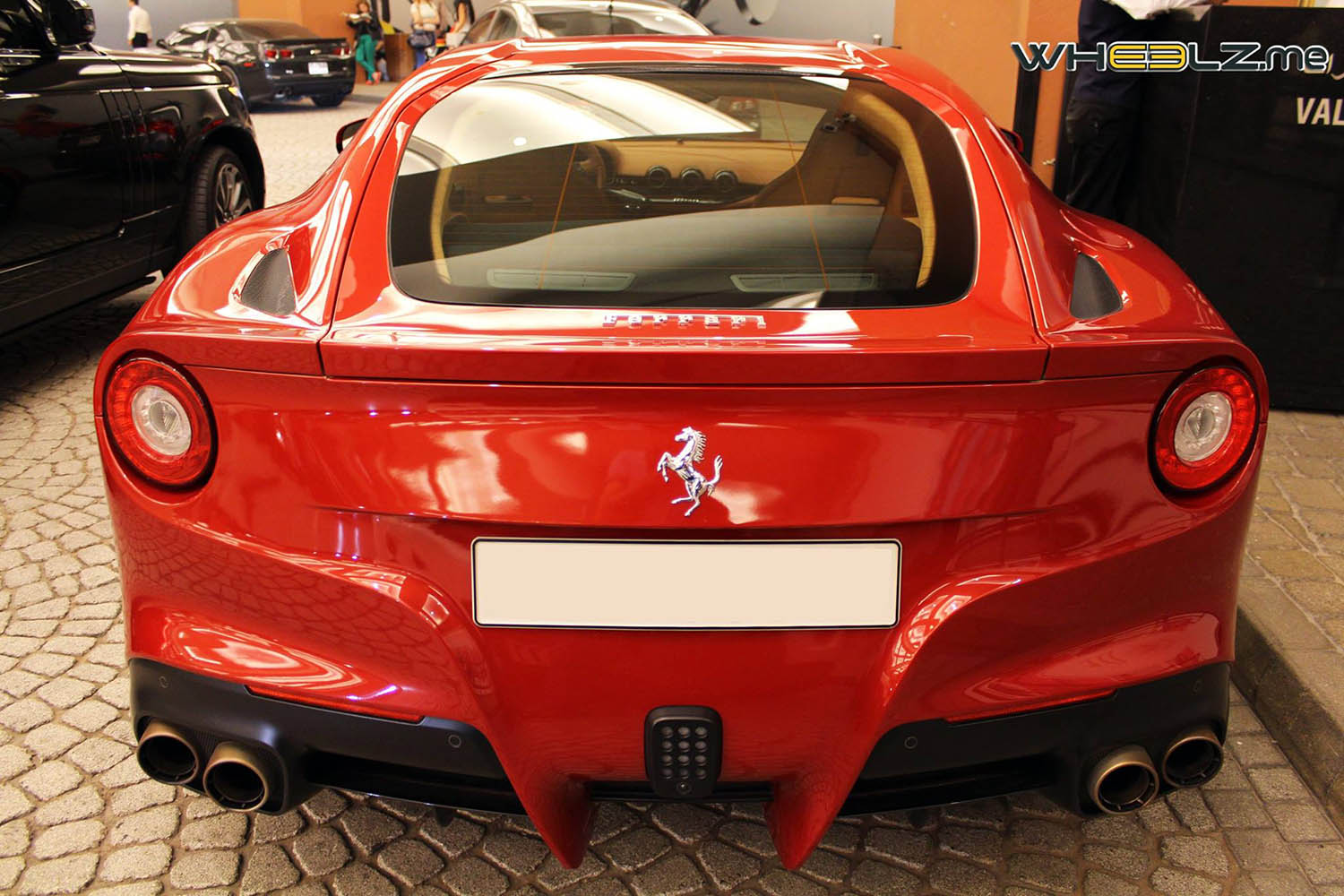
The Ferrari F12berlinetta’s Racing manettino puts the emphasis on sporty driving on high grip surfaces, offering drivers ample scope to adjust the electronic control system settings. On the dashboard, the right-hand satellite pod features the controls for the corresponding TFT screen which displays infotainment information. It is also used to control the sat nav, stereo with audio streaming via Bluetooth, voice-activated track, artist, album and song title selection. It is also possible to use a smartphone to connect to internet to listen to web radio, podcasts and download Apps.
The left-hand pod controls the Vehicle Dynamic Assistance function, which offers an instantaneous evaluation of the car’s status and potential performance levels on the left-hand display. When activated in the RACE, CT-Off and ESC-Off manettino modes, it makes driving even more involving, as well as safer, by keeping the driver informed of the optimal conditions for the car at all times. A special algorithm estimates the car’s status (brake, tyre and engine temperature) on the basis of various dynamic parameters (lateral acceleration, longitudinal acceleration, speed, engine revs). It will then alert the driver to the aforementioned conditions using the following messages: WARM UP (further warming up of the components required); GO (optimal condition for maximum performance); OVER (overheating, components must be allowed to cool).
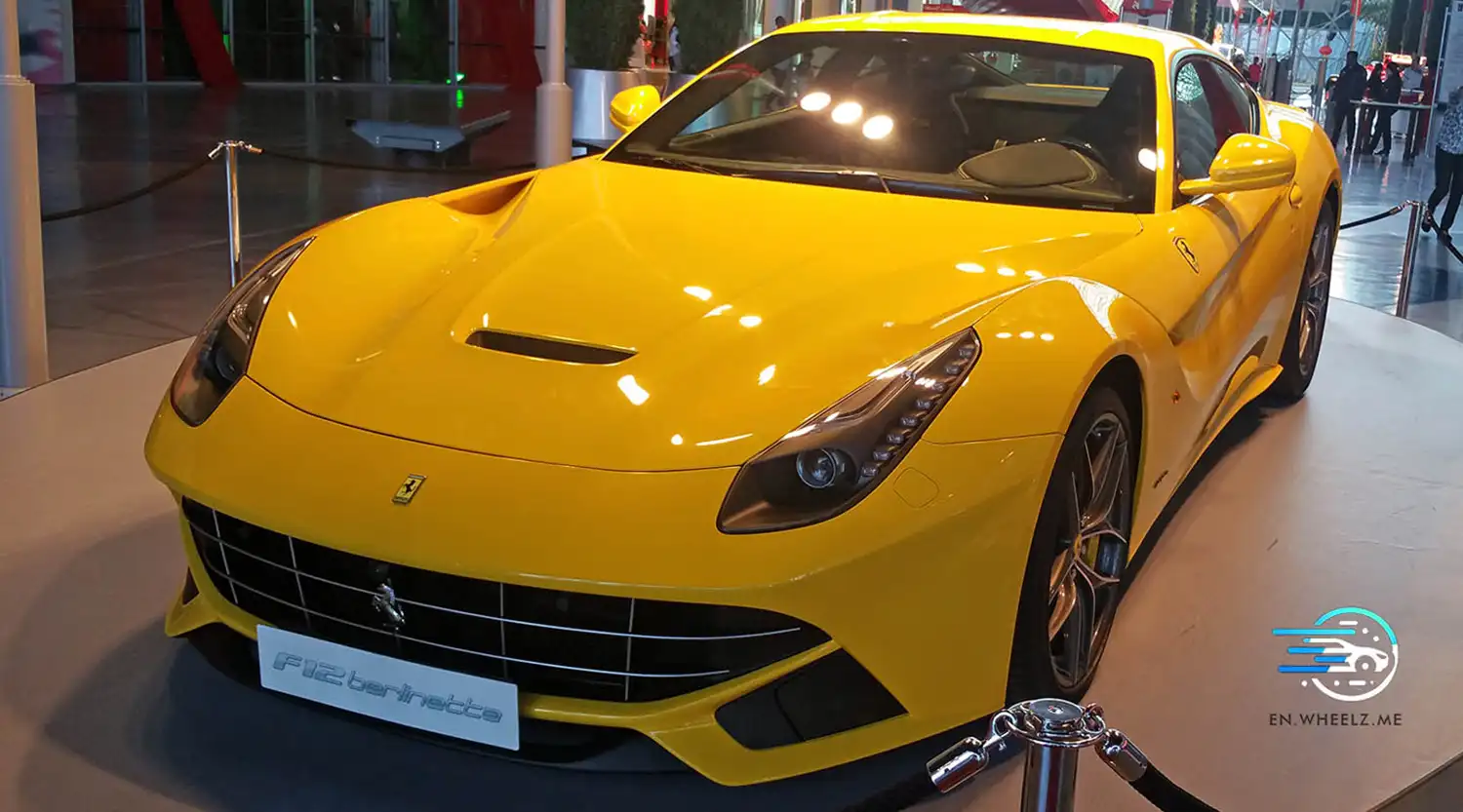
The main objective with the Ferrari F12berlinetta’s seats was to reduce their volumes as much as possible to ensure freer occupant movement within the cabin while, at the same time, ensuring they are extremely comfortable and respect lateral containment geometries. The headrest is fully integrated into the backrest, giving the seat a very modern, track-inspired feel.
The rear of the cockpit features an upholstered rear bench with leather luggage straps to hold bags securely in place. Occupant space is generous indeed – the seats are comfortable for individuals up to 1.95 m (6’4″) – as is the boot (320 litres). Luggage space can be increased to up to 500 litres by lowering the rear bench panel, which makes the Ferrari F12berlinetta ideal for longer journeys in the company of a passenger.
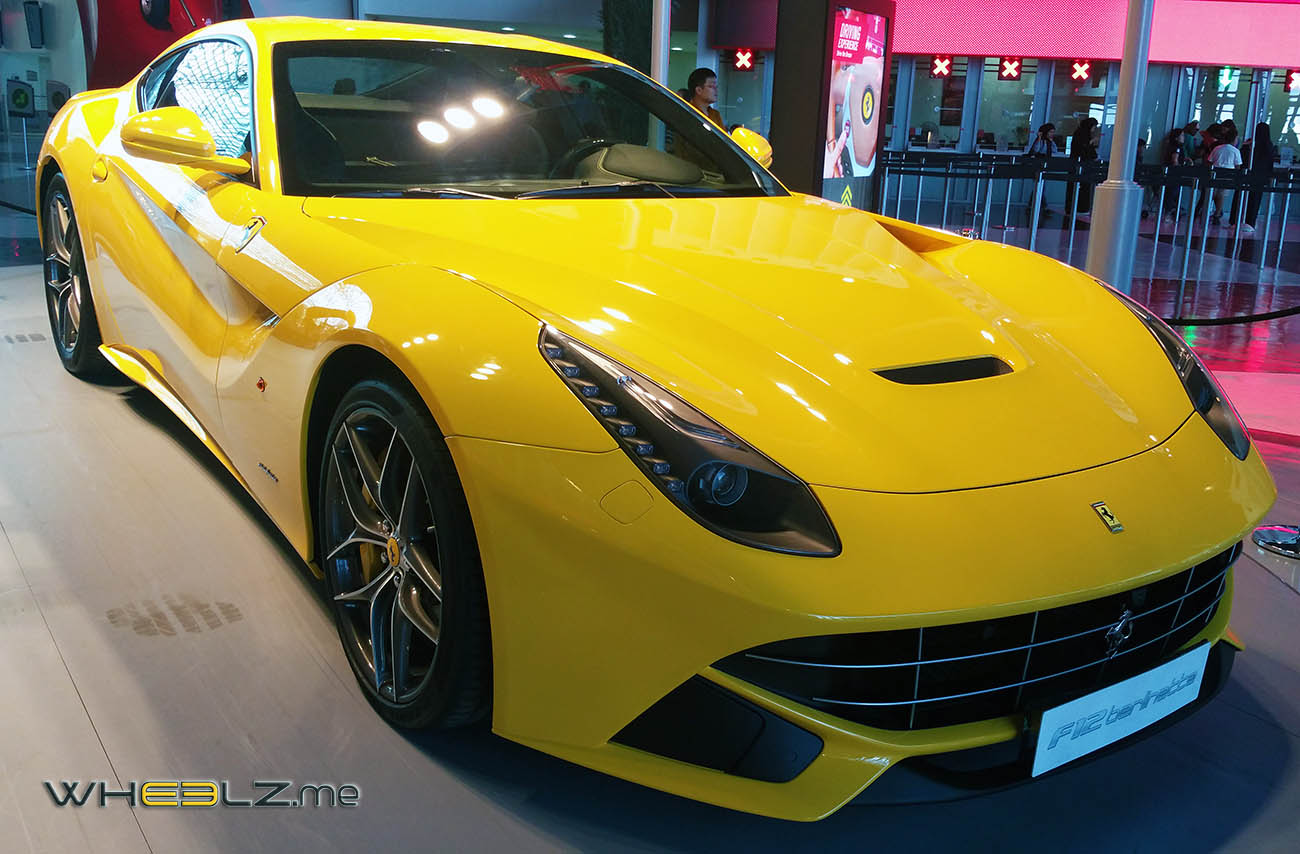
Personalisation programme
Every Ferrari is unique, not just in terms of its performance, standard of technological innovation, and driver involvement and emotions, but also because of the virtually endless array of personalisation opportunities made available to it. Every single car that leaves Maranello, in fact, is tailored to a greater or lesser extent around the tastes and needs of its individual owner. Ferrari’s rich and varied catalogue of content allows clients to personalise their cars along four main themes:
- “Exterior and Colours”: offers a vast choice of ways to personalise the exterior of your car, starting with the two new paintwork colours, Rosso Berlinetta and Aluminium, created specifically to enhance the Ferrari F12berlinetta’s aerodynamic forms. There are also 16 standard range colours and 10 historic ones to choose from. Sporty finishes for various details such as the front spoiler, sill covers and wing mirrors are available too as are three different wheel rim colours which can be combined with coloured brake calipers and carbon-fibre hubcaps;
- “Interiors and Materials” : allows you to configure even the tiniest cabin detail to your own tastes. A huge array of luxury leathers, also available in sophisticated two-tone combinations, can be used to recreate whatever atmosphere you desire for the cabin. Technical fabrics and Alcantara can be used too to highlight contrasts. Even the stitching can be personalised in terms of colour, type and size to add an extra touch of elegance to the latter combinations. Our range of seats spans three instantly recognisable upholstery types: Ferrari tradition is ably represented by the Daytona and Diamond-Stitched versions which flank the sophisticated modern good looks of the new Leaf seats which have a characteristic leaf stitch pattern;
- “Racing and Track”: is designed to lend your Ferrari F12berlinetta an even sportier élan as its options underscore the car’s links with the racing world through signature features such as carbon-fibre spoilers, headlight trims and sill covers as well as new forged wheel rims and sporty tailpipes. This theme can also be continued inside the Ferrari F12berlinetta’s cabin with the likes of carbon-fibre shell seats, new carbon-fibre dashboard inserts and other trim, and a carbon-fibre steering wheel with LEDs. However, the latter content not only enhances the Ferrari F12berlinetta’s sporty character but also boosts its already-extreme performance by shaving more than 30 kg off its overall weight;
- “Equipment and Travel”: contents are created to make the in-car experience more pleasurable for both driver and passenger, courtesy of such features as front and rear parking cameras, adaptive head lights and pneumatic jacks, all of which guarantee the driver maximum support in all driving conditions. JBL Professional has also developed the Ferrari F12berlinetta’s new stereo system which has Quantum Logic™ and 12 speakers delivering a total of 1280 W. Combined with the new evolved emotional display, which now includes navigation data readouts, this makes the whole in-car experience even more unique and involving for the passenger.

The cutting-edge High Emotion Low Emissions package also provides further testament to Ferrari’s commitment to the environment as it employs leading-edge emissions reduction technologies without impinging in the least on the superb driving pleasure and performance delivered by all Prancing Horse cars. Aside from the many, many catalogue options available, owners wishing to personalise their Ferrari F12berlinetta to an even more unique and exclusive standard can also avail of the Tailor Made programme. The latter offers a select group of clients a truly extensive selection of luxury fabrics, colours, original finishes and materials – some never used before in the automotive arena – to allow them literally tailor their car to their tastes like a bespoke suit. The result is a set of unique combinations inspired by the most iconic Ferraris and the racing world, and divided into three collections created specifically by the Style Centre: Classica, Scuderia and Inedita. Owners are flanked throughout the entire process of tailoring their bespoke car by a Personal Designer who will assist them in the choices and at every stage of the project’s development until actual delivery.
